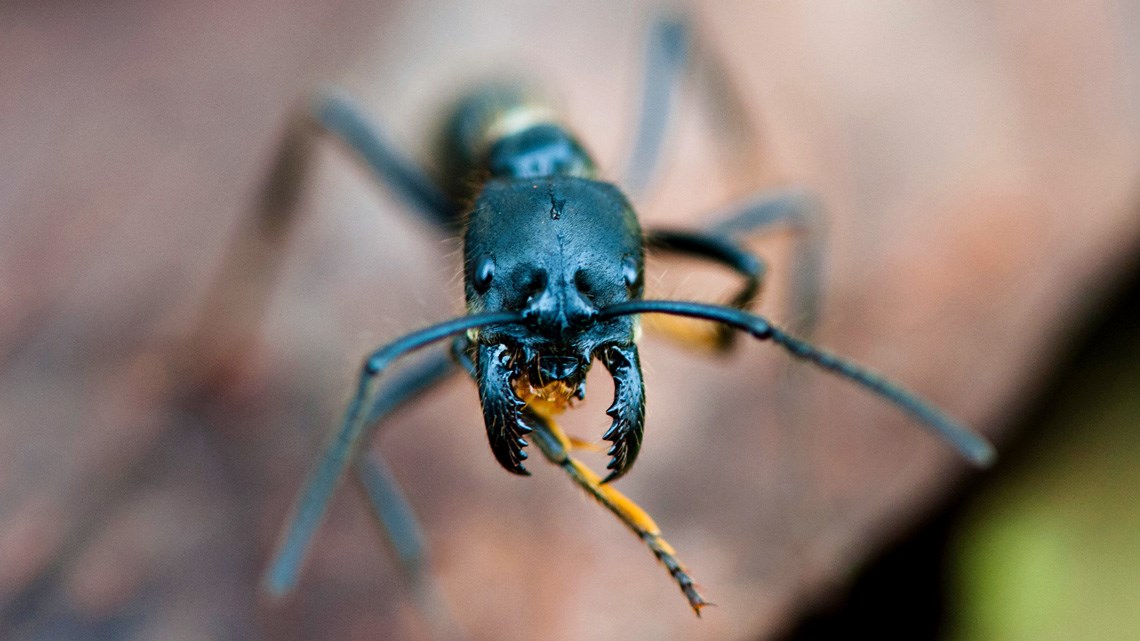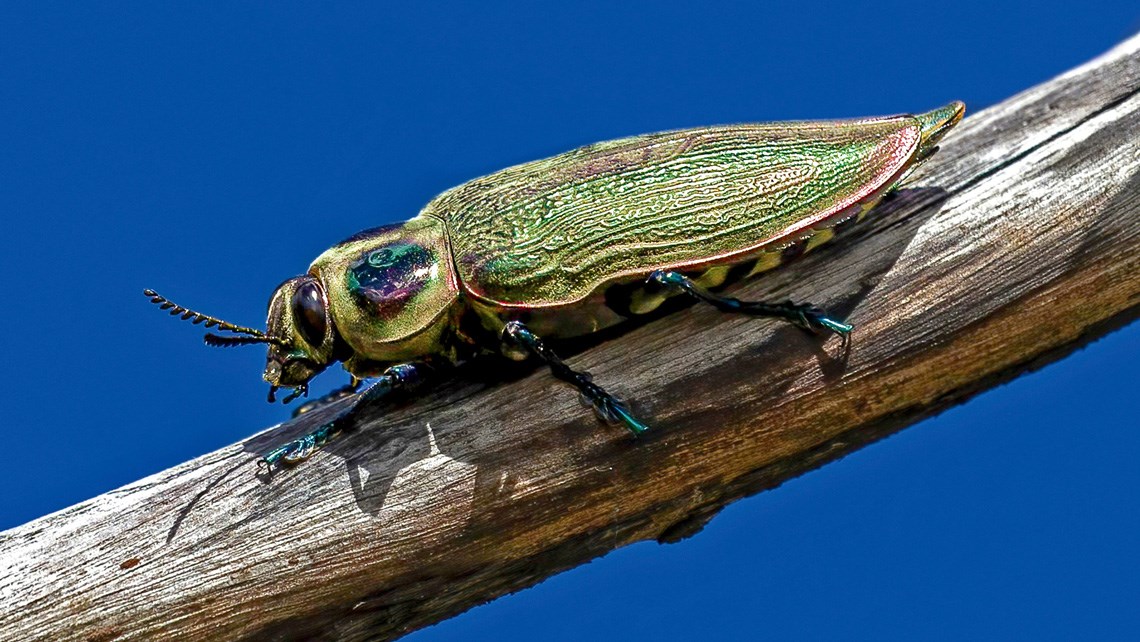In recent years, a vast section of Brazil’s population has suffered threats to its survival of varying scale and nature. This state of peril is manifested through disorganized urban occupation, environmental degradation and pollution, climate change, excessive use of pesticides, and various other factors. To make matters worse, an absence of comprehensive data means the public is unaware of the sheer scale of the losses being suffered. Although the above description also applies to the 215 million Brazilians living in the country, we are actually talking about an even larger and often invisible population: insects.
An unprecedented nationwide study has revealed that terrestrial insect populations are declining in the country—following a worldwide trend, but one that had not yet been properly documented in Brazil. The resulting article, published in the journal Biology Letters, is based on a review of 45 published studies and questionnaires sent to researchers across the country. The data were organized by researchers from the University of Campinas (UNICAMP), the Federal University of São Carlos (UFSCar), and the Federal University of Rio Grande do Sul (UFRGS).
Of the 156 researchers contacted, 96 responded to the questionnaire and 56 offered data and publications to the group led by Thomas Lewinsohn, a biologist from UNICAMP’s Institute of Biology. The team used the information they gathered to identify 75 trends from 45 studies, for an average period of 22 years of terrestrial insect observations, with an emphasis on butterflies, bees, and beetles, and an average period of 11 years for aquatic insects.
Regarding terrestrial insects, there were 19 trends toward population decline, compared to 5 growth trends and 13 of stability. Cases of decline were also more numerous when it came to species diversity, at 14 compared to 5 for growth and 19 for stability.
With respect to aquatic insects—meaning those that live at least one stage of their life cycle in still or moving water—the study identified a balance between demographic trends, with 6 cases of stability, 2 of decline, and 2 increases. In diversity of aquatic insect species, there was also more stability: 11 cases where no trends were identified, 4 indicating growth, and 3 indicating decline.
“The differences in the results between the two habitat types may be linked to the shorter average observation period in studies of aquatic environments, as well as methodological issues,” explains Lewinsohn. “Most of the data for aquatic insects are from studies carried out by environmental control agencies; there is therefore a bias towards locations that have been heavily disturbed before observations began, especially by domestic and industrial pollution. The dataset for terrestrial insects has a more varied provenance, much of it from preserved areas.”

Léo Ramos Chaves/ Revista Pesquisa FAPESPThe falling number of bees, which are responsible for pollinating many plant species, could have a direct impact on global agricultural productionLéo Ramos Chaves/ Revista Pesquisa FAPESP
The population decline observed among terrestrial insects has multiple causes, ranging from changes in land use—such as the removal of native vegetation to make way for agriculture—to overuse of pesticides, increasing pollution, climate change, and even the introduction of exotic species.
Biologist Kayna Agostini of UFSCar’s Department of Nature Science, Mathematics, and Education, coauthor of the study, highlights the importance of this type of research, despite the doubtful questions she is often asked about it. “Some people ask me: ‘Why is it so important for us to know if the insect population is declining? We should be thankful for it!’ What they don’t realize is that most insects do not transmit diseases, but are each in their own way responsible for important ecosystem services.”
Insects pollinate many agricultural crops, including watermelon, pumpkins, coffee, oranges, and soybean, as well as playing a fundamental role in the decomposition of dead animals. They also help transport materials, aerate the soil, and control the populations of adverse species, and are essential prey for fish, birds, and other land animals.
The Brazilian study was not limited to the demographic evolution of insects considered urban pests, such as cockroaches, termites, and mosquitoes, or those that damage crops, such as grasshoppers. It had a broader focus, encompassing all species for which studies were available. Lewinsohn claims that extinctions have always occurred and always will occur. “But they are now happening on an unprecedented scale and speed, which is catastrophic,” he warns.
Changes in insect populations take place more quickly than in mammals, for example, in which observable alterations occur in cycles of 10 or 20 years, explains the researcher. “In that same timeframe, we can observe 30 or 40 generations of insects, with population changes highlighting environmental phenomena and ecosystem processes that we would either not see or would take a long time to see otherwise,” he says. The lives of insects are like an extremely sensitive thermometer we can use to measure the health of the planet.
Behind the study
Lewinsohn and three of his former students who contributed to the paper—in addition to Agostini, André Victor Lucci Freitas from UNICAMP, and Adriano Melo from UFRGS—began planning the study in mid-2021. The research involved dozens of other colleagues, demonstrating that connections, interactions, and diversity are not only positive characteristics in ecosystem services, but also in the production of science.

Léo Ramos Chaves / Revista Pesquisa FAPESPDinoponera australis ant collected in São Paulo: global population was estimated at 20 quadrillionLéo Ramos Chaves / Revista Pesquisa FAPESP
Due to the scarcity of data available in indexed publications, the group decided to expand the scope of the survey to include conference proceedings, technical reports, theses, and dissertations. This was only possible thanks to each member of the team utilizing their networks of colleagues and sending out forms to track and gather the material.
“There are many biologists in Brazil and many scientists doing plant, animal, and microorganism taxonomy. What we need to do is organize existing knowledge to create systematic information. The first step was to utilize our networks. The process of gathering all this data was really positive, with more responses to the questionnaire than we expected,” emphasizes Lewinsohn.
The study’s impact broke the academic bubble and was well received outside academia. Foreign publications, such as the British newspaper The Guardian, have asked the researchers for interviews, and the conservation and environmental science news agency Mongabay covered the survey widely.
Mexican biologist and conservationist Rodolfo Dirzo of Stanford University, USA, highlights “the herculean effort to compile the best possible information on population trends among insects in Brazil.” He also notes that the data is in line with observations made in the Northern Hemisphere: “A considerable decline in insect abundance accompanied by a smaller but significant decline in species diversity.”
Brazilian biologist Bráulio Ferreira de Souza Dias, from the University of Brasília (UnB), stresses that no other major tropical region in the world can match Brazil’s level of environmental monitoring, especially when it comes to satellite imaging. “The species-monitoring data had never been consolidated before. This article offers the first picture of the populational situations of a large number of insects, especially in the Atlantic Forest, Cerrado, and Amazon biomes,” he points out.
According to the scientist, who did not participate in the study, Brazil is losing species and these new results provide evidence of the impacts of local and regional phenomena, such as deforestation and pollution. “But they still do not make it possible to assess whether insect populations are being impacted by broader phenomena, such as global warming and the consequent climate changes,” he says.
British ecologist Jos Barlow, a professor from the University of Lancaster, UK, who studies human impacts on rainforest biodiversity, also highlights the importance of the Brazilian study. “Understanding long-term trends in biodiversity is important, but it is also very complex, especially in a country like Brazil, which faces considerable challenges in identifying its diverse fauna, including difficulties accessing many regions,” Barlow told Pesquisa FAPESP. He was not involved in the Brazilian study.
In decline or not, the number of these insects on the planet is astronomical, estimates study
Like the Brazilians who gathered data from a range of studies to observe the insect population in the country, a group from the School of Biological Sciences at the University of Hong Kong looked at 498 international studies, covering all continents and all of the main terrestrial biomes, to estimate the total quantity and volume of ants on Earth.
The authors of the study made a conservative estimate that there are 20 quadrillion—the number 20 followed by 15 zeros—ants living on our planet. Their biomass, meaning the total weight of this superpopulation, is about 12 billion tons. This exceeds the total mass of all wild mammals and birds combined and is equivalent to 20% of all of humankind. The results of the study were published in the journal Proceedings of the National Academy of Sciences (PNAS).
In terms of distribution, most of the world’s ants live in the tropics and their concentration varies by up to six times between the most and least populated regions. According to the authors, their global map “provides a baseline for predicting ants’ responses to worrying environmental changes that currently impact insect biomass.”
Scientific articles
LEWINSOHN, T. M. et al. Insect decline in Brazil: An appraisal of current evidence. Biology Letters. Aug. 24, 2022.
SCHULTHEISS, P. et al. The abundance, biomass, and distribution of ants on Earth. Proceedings of National Academy of Sciences (PNAS). Sept. 19, 2022.


